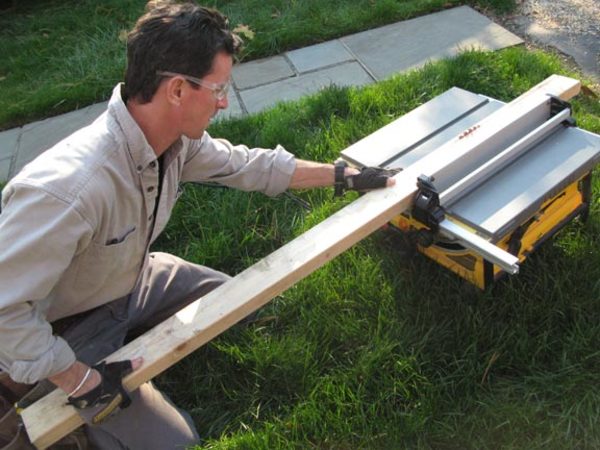When I started in carpentry 20 years ago, there were essentially two kinds of table saws in a home workshop or job site. First was the big, cast-iron contractor saw—a 2.5-horsepower, 240+-pound behemoth that was, if you can believe it, considered portable and often moved to job sites. At the opposite end of the spectrum were the newer-fangled but considerably lighter-duty portable table saws. Weighing roughly 200 pounds less than their big brothers, they were sparingly detailed and delivered (barely) the most basic functions.

Over time, these portables have evolved to more closely resemble their professional counterparts, minus the bulk. The biggest breakthrough came a couple of years ago, when a new wave of feature-rich portables hit the market, combining details and small size in the same package. This newest fleet of compact saws boasts some advanced features I really like.
What to Look For
Power. A table saw’s stock-in-trade is ripping (cutting along the length) of 1-by and 2-by lumber. (Note: No table saws, even the big old ones, were designed to cut sheet goods like plywood.) A motor powerful enough to smoothly devour sawn lumber—at least 15 amps—is key to me. All the pro-grade compacts on the market have the muscle. Less expensive saws still make the cut, but you can feel the difference.
Fence. A stout, straight fence that stays parallel with the blade is essential for accuracy and efficiency. One that stays parallel and adjusts easily—i.e., doesn’t stutter or catch on sawdust in the rails—is even better. A rack-and-pinion fence adjustment generally delivers on both counts.
Blades. For rough work, the included blade will probably get the job done. For jobs where swirl marks from your cuts will show—like on a saddle threshold or a custom doorjamb—a higher quality blade is a must. They’re more expensive and cut slower, but they deliver smoother, cleaner cuts, reducing or eliminating sanding requirements in trim pieces.
Portability. As important as portability is, it means different things to different people. If all you’re talking about is a manageable size and weight (around 50 pounds), most compacts fit the bill. But if you move the saw around a lot—whether it’s to job sites or up and down stairs between a workshop and projects within your own house—you might benefit from some of the newest portability add-ons like over-molded rubber grips at carry-points or a handle that allows you to carry the saw like a suitcase.
The Bottom Line
If you depend on larger portables for woodworking (which will give you more comfort, stability, and cutting options) you might find the compacts…well, too compact. But if you’re moving around or have a confined shop space, and depend on a table saw for a combination of rough carpentry (fences, porches, framing) and trim (cabinet fillers, flooring, thresholds), then a compact with a powerful motor, primo fence, and small footprint can deliver big work without taking up much space.
Carpenter Mark Clement is working on his century-old American Foursquare in Ambler, Pennsylvania, and is the author of The Carpenter’s Notebook.







